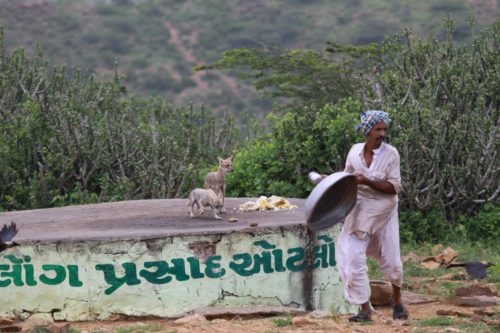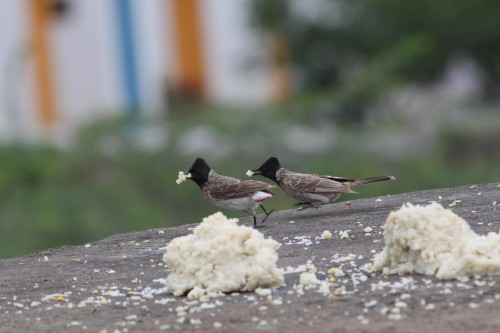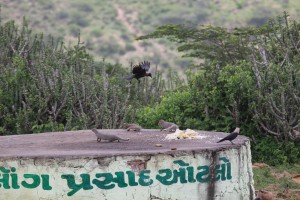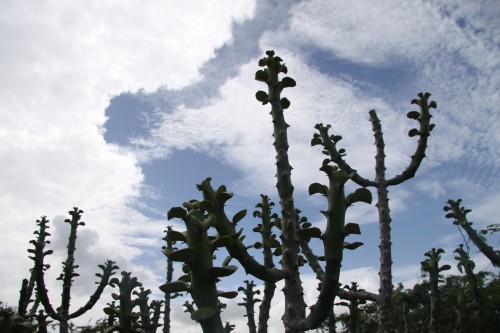The Jackals of Kala Dungar – Where A Community Has Kept Them Alive With Vegetarian Food
The story of the jackals of Kala Dungar is a unique story of man-animal coexistence because in the arid and unforgiving landscape of Kachchh, here’s a case of jackals (who

The story of the jackals of Kala Dungar is a unique story of man-animal coexistence because in the arid and unforgiving landscape of Kachchh, here’s a case of jackals (who are known to be carnivorous) who have been taught to survive on vegetarian food by a community of people over many, many generations! This practice made sure that there’s a healthy population of jackals in the Kala Dungar area (which is near the harsh Greater Rann) who even at the worst of times are assured of at least subsistence-level food. Gangadharan Menon reports.
As the molten sun sets in the Great Rann of Kachchh, a pack of hungry jackals trudge their way up the crumbling hills of Kala Dungar. Then they wait patiently in the scrub jungles on the hilltop, as if waiting for a cue. Suddenly a mysterious chant fills the air and a priest descends from the nearby temple, carrying a large vessel. The jackals slowly advance towards a clearing as the priest empties the vessel on a raised platform there. The moment he turns his back, the hungry pack pounces on the food and laps it up in no time. The surprise is that the food that was offered to them was rice and dal cooked with a generous helping of jaggery!

How did these wild jackals take a liking for such a bland diet?
The answer lies in a legend. Over four centuries ago, there lived on these black mountains a saint named Pachmai Peer. One day a pack of wild jackals appeared in his ashram and stood expectantly in front of him. Looking into their eyes, he realized that they were famished. All that he could offer them was a spartan meal of rice and dal, the staple diet of the ashram. And offer he did, and the jackals went back with their tummies full. He brushed it aside as a one-off incident, till he saw them at the same time at the same place the next day. The ritual of feeding continued for months till one day when there was no food in the ashram. The boy who had gone to get the provisions hadn’t returned, but the jackals reached at the appointed time. Realising that his guests will have to go back hungry, the Peer, in a gesture of unimaginable generosity, chopped off his hand and offered it to the jackals, saying ‘lo ang’, which meant ‘here, eat my hand’. The jackals, as on every other day, went back satiated. But from that day onwards, the inmates of the ashram have made sure that the jackals of Kala Dungar are fed, not once but twice a day. And they haven’t missed it even once in the last 400 years.

Today, as the priest takes the vessel to the jackals, he chants ‘lo ang, lo ang, lo ang’, reminding himself constantly of his Guru’s generosity. This chanting is also accompanied by the pealing of temple bells, both of which have a Pavlovian effect on the hungry jackals.
It’s not just the jackals that partake of this hospitality. Much before the jackals arrive, the feeding area is abuzz with activity: there are bulbuls and doves that are jostling with each other, and there are mongooses and dogs that are scurrying about. But the moment the jackals arrive, everyone retreats, giving the jackals the first right to feast (except for the argumentative crows). The leftovers are then polished off by the birds and the other animals. In the night, even porcupines are seen sharing the spoils after the jackals have had their fill.

Kala Dungar is the tallest hill in the whole of Kachchh, rising 1400 feet above sea level. It offers the most panoramic view of the Great Rann of Kachchh, almost 180 degrees of it, right up to the India-Pakistan border.
The centuries-old feeding tradition in these hills has had a positive impact on the conservation of wildlife: the highest density of jackals in the world can be found in Kala Dungar. In around 20 square kms of scrub jungle, you have as many as 150 jackals. Of these, around 20 to 30 come to partake of the vegetarian offering. The others must be strictly non-vegetarian!
 It’s not known whether the same group keeps coming back to the temple or they take turns. But one thing is clearly noticed: they prefer to come under the cover of night. Because the average number that come to eat during the day is 4 to 5, whereas the number swells to 20 to 25 by night.
It’s not known whether the same group keeps coming back to the temple or they take turns. But one thing is clearly noticed: they prefer to come under the cover of night. Because the average number that come to eat during the day is 4 to 5, whereas the number swells to 20 to 25 by night.
Jackals are omnivorous. They feed on small preys like jungle rats, hedgehogs and dung beetle, as also on carcasses. The vegetarian part of their diet comprises ripe fruit that falls on the ground. In the absence of such fruit-bearing trees in the scrub jungles of Kala Dungar, the rice-dal-jaggery combo meal must be considered a good substitute!
Yes, in the hills of Kala Dungar, man shares food with jackals. And jackals in turn share it with bulbuls, doves, mongooses and porcupines. When resources are scarce, sharing is a way of life. In fact, the only way of life. Is there any other?
How to get there: Kala Dungar is around 90 kms from Bhuj. As there is no public transport available to reach there, you will have to arrangements for a vehicle at Bhuj itself.
Where to stay: There is only a dormitory at Kala Dungar, with very basic amenities and a langar that serves basic vegetarian food. But you cannot book it over the phone; so you will have to take a chance. Alternatively you can stay in Bhuj and leave for Kala Dungar in the wee hours of the morning. The first feeding is at 9 am and the night feeding is at 6 pm. You can witness both and drive back to Bhuj the same day.

All Photos: Gangadharan Menon
This story made me
-
97
-
121
-
89
-
167













